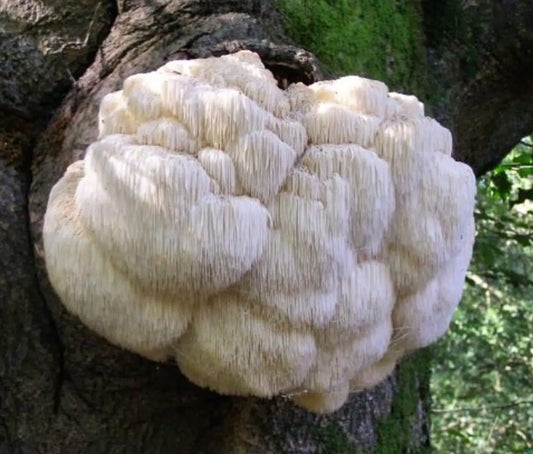Oyster mushrooms (Pleurotus ostreatus) are a type of edible mushroom that grows in clusters on trees or logs. These mushrooms get their name from their oyster shell-like shape and have a mild, slightly sweet taste. Oyster mushrooms are prized as a culinary delight because they are delicious, versatile, healthy, and extremely easy to grow.
The most notable 17 facts about oyster mushrooms are mainly focused on the health benefits associated with consumption. Oyster mushrooms are loaded with antioxidants like polysaccharides and ergothioneine which are crucially important to good health. Oyster mushrooms can also clean up pollution and are one of the few carnivorous mushrooms.
Find out why so many people around the world grow oyster mushrooms and how you can join them. Soon, you too will be able to cook culinary masterpieces with oyster mushrooms you grew yourself!
Facts About Oyster Mushrooms
17. Oyster Mushrooms Reduce LDL Cholesterol and Triglyceride Levels
In a study published in the Journal of Functional Foods, researchers found that oyster mushrooms reduce LDL cholesterol and triglyceride levels in humans. Even more promising, healthy cholesterol, HDL cholesterol, levels went unchanged. (Schneider et al., 2010) By association, compounds present in oyster mushrooms can effectively impede the development of atherosclerosis.
Researchers believe that the cholesterol-lowering effect of oyster mushrooms is due to their high concentration of linoleic acid and ergosterol. Additionally, oyster mushrooms are a rich source of dietary fiber and this fiber binds to cholesterol in the gut, preventing it from being absorbed into the bloodstream.
16. Oyster Mushrooms Contain Anti-Cancer Polysaccharides
In a study analyzing anticancer agents that don’t come with toxic side effects, researchers came to the conclusion that compounds in oyster mushrooms can both boost the immune system, and effectively kill cancer cells, while avoiding toxic side effects. The compounds responsible for the anticancer properties are polysaccharides. Oyster mushrooms contain a number of different polysaccharides including beta-glucans, alpha-glucans, resveratrol, linoleic acid, and ergosterol. (Mishra et al., 2021)
Consuming oyster mushrooms on a regular basis is a good prophylactic measure to reduce the possibility of developing cancer.
15. Oyster Mushrooms Stabilize Blood Sugar Levels
In a study on diabetic individuals, it was found that consuming oyster mushrooms significantly reduced blood glucose levels. Furthermore, the study went on to say that this reduction in blood glucose levels wasn’t accompanied by negative side effects in regard to liver and kidney function. (Khatun et al., 2007)
Stable blood glucose levels are critically important to avoiding degenerative diseases. Even people who don’t have diabetes should take measures to stabilize their blood glucose levels, as it is directly related to longevity. (Noordam et al., 2013) This makes consuming oyster mushrooms a simple way to maintain ideal health.
14. Oyster Mushrooms Have Antiviral, Antibiotic, And Antifungal Properties
Oyster mushrooms contain bioactive compounds that are antiviral in nature. These compounds include polysaccharides, polyphenols, and triterpenes that are effective against both RNA and DNA viruses. (Seo & Choi, 2021)
An oyster mushroom extract was shown to inhibit the growth of both bacteria and fungi. Specifically, oyster mushroom extract inhibits the growth of candida, staphylococcus aureus, and E. coli. The specific novel compound in oyster mushrooms that inhibits the growth of both bacteria and fungi is 3-(2-aminopheny1thio)-3-hydroxypropanoic acid. (Younis et al., 2015)
While oyster mushrooms are delicious at any time of year, they may be especially valuable when the seasonal flu is going around, due to their antiviral effects.
13. Oyster Mushrooms Reduce Free Radical Damage
Oyster mushrooms contain significant quantities of antioxidants that are able to reduce free radical damage. Of note, oyster mushrooms contain gallic acid, chlorogenic acid, and naringenin. (Alam et al., 2010) Even more noteworthy, oyster mushrooms contain high quantities of ergothioneine, a strong antioxidant that plays a critical role in good health. (Ey et al., 2007)
A study on rats determined that oyster mushrooms were able to reduce inflammatory markers due to their antioxidant potential. (Jayakumar et al., 2007)
Another study showed that the antioxidants in oyster mushrooms could reduce damage to the liver that was caused by toxins. (Abdel-Monem et al., 2020)
By association, oyster mushrooms are a tool in the fight against chronic, systemic inflammation that many people in the modern world suffer from. This inflammation is behind many common diseases. By reducing free radicals, we are able to hamper inflammation.
12. Oyster Mushrooms Contain High Quantities Of Ergothioneine
There are a few mushrooms that contain high quantities of the crucially important antioxidant ergothioneine. Oyster mushrooms are one of those species, as most oyster mushrooms contain right around 300 mg of ergothioneine per kilo. The King Oyster mushroom contains the most amount of ergothioneine of any mushroom species at over 2,000 mg per kg. (Ey et al., 2007)
Many people are chronically low on ergothioneine, as they don’t eat mushrooms at all. Ergothioneine has been touted to be the “longevity vitamin”, as it is required in many different biochemical reactions and is especially important to neurological health. Low levels of ergothioneine have been directly correlated to a variety of neurodegenerative diseases like Alzheimer’s, Parkinson’s, and dementia. (Beelman et al., 2020) In other words, eat oyster mushrooms if you want to remain mentally fit for a lifetime.
11. Oyster Mushrooms Lower High Blood Pressure
The beta-glucans present in oyster mushrooms has been shown to lower blood pressure. (Bashir & Choi, 2017) In addition to other cardiovascular system benefits, like lowering LDL cholesterol and lowering triglyceride levels, oyster mushrooms are excellent for overall cardiovascular health.
10. Oyster Mushrooms Optimize The Immune System
Oyster mushrooms contain numerous immune system-boosting compounds. The beta-glucans contained in oyster mushrooms have been shown to improve the immune system, increasing the body’s resistance against common viruses like herpes simplex type 1. (Urbancikova et al., 2020)
Beta-glucans are also effective against respiratory tract infections in both children and athletes. (Jesenak et al., 2013) (Bergendiova et al., 2011)
Oyster mushrooms elevate specific cytokines that are responsible for immune system function. This leads to an up-regulation of natural killer cell activity, maximizing immune system potential. (Tanaka et al., 2015)
9. Oyster Mushrooms Improve Gut Health
Advances in microbiome research are indicating how crucially important our gut health is to our overall health. Oyster mushrooms have been shown to improve gut health in one study on obese rats. The dietary fiber in oyster mushrooms acts as a prebiotic and has been shown to support probiotic gut bacteria, while reducing pathogenic bacteria. (Maheshwari et al., 2021)





